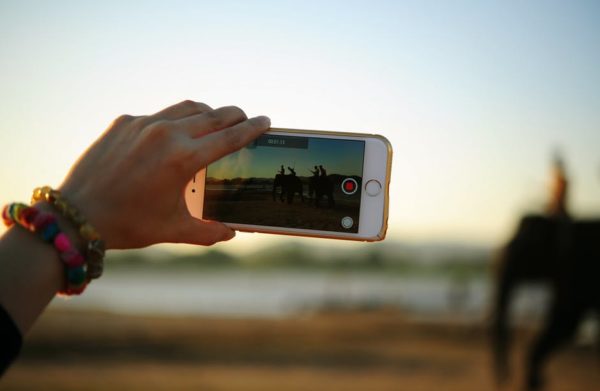The History of Video Technology
When we watch modern day movies and games, it is easy to be impressed by the feats of current technology. The evolution of it all allows us to be amazed when we watch movies produced professionally for our entertainment and education, and it allows us to forever keep some of the memories and moments we love best on a personal level.
However, the modern feats of video technology began evolving long before today’s film buffs and home movie mavens picked up a camera. The video we know today is the result of a lot of trial and error, and specifically multiple forms of technology.
Much of the cutting edge tech of today is a result of what was first just video. For instance, video chatting or FaceTiming is the cousin of video. The virtual reality technology that has changed everything from market research to gaming is the grandchild of video. And in the future we’ll be able to combine FaceTiming and augmented reality.
The one thing that was instantaneous with film — and has remained consistent since its earliest days — is that we love it. In a sense, the novelty of film has never truly worn off. If you consider the clear, continued success of blockbuster movies, the likes of YouTube, and the videos we all store on our smartphones, it’s clear the only thing that’s really changed is how we record and store video.
The Birth of Film
Because there were so many working towards creating film in the earliest days, there is no way to pinpoint an exact starting place. Instead, there were many beginnings in many places. With that being said, though, there were two brothers whose work and subsequent invention launched the film industry as we know it.
1890s
Certainly, the earliest known inventions that became the springboard for film and video were the kinetoscope — forms of which were developed both by Frenchman Louis Le Prince and Edison — and then Thomas Edison’s kinetograph. Both relied upon the method of stringing together photographs so quickly that they created the illusion of movement.
And then came what was decidedly the first in public, collective film viewing: French brothers Auguste and Louis Lumière found that the moving images produced by their patented cinematograph were far more appealing to audiences. In 1895, 200 people in france attended the first successful projected motion picture screening.
1890s-1920s
The Lumière brothers’ gave birth to the industry we know today. In 1916, three Americans invent the process that became known as Technicolor. Technicolor quickly becomes the most popular format for shooting movies.
In 1926, Warner Brothers and Vitagraph Studios worked together to create the Vitaphone analog sound system. The following year that technology was used to make the movie the “The Jazz Singer”, which became the first film to include synchronized dialogue.
1930s-1950s
The work of 21-year-old inventor Philo Farnsworth — who grew up without electricity no less — pays off, and TVs hit the market for the first time in 1934.
In 1951, color is introduced to TV programming by CBS, and then in 1954 color TVs become available to the public. However, given its novelty and price, consumers are not instant fans. As the technology gradually became more efficient to make, it became less costly. But, it’s replacement of black and white sets took a couple of decades.
Film Becomes Mainstream
In the second half of the 20th century, video took a drastic and awesome new direction. Where before it was contained within the professional landscape of movies and television, the technology on the way would make amatuer movie making concievable for the vast majority of the population.
1960s
In 1965, Sony released its 8mm film and introduced The Super 8 format, which offered a far more streamlined process than past home movie makers had. This developement was the first that really allowed amatuer filmmakers to get their hands dirty. For example, Steven Spielberg shot his earliest work with The Super 8.
A couple years later, Sony put the DV-2400 Video Rover portapak on the market. It was the first portable VCR unit. Thus, not only were the major companies within the industries pushing to get the technology into the hands of consumers, they also understood that that largely meant the technology needed to become smaller and lighter.
1970s
The Betamax was released in 1975 in Japan and the U.S., and in 1977 RCA released the VHS in the U.S. So began the videotape format wars as the two forms of analog home recording battled it out. Ultimately, though, while Betamax had better visual and audio quality, consumers consistently favored VHS. VHS was significantly less expensive, and had longer recording capabilities, and Betamax was forced to bid adieu.
Since then, the advances made in video overall have largely been accessible to the layperson. The 1970s marked the point in the history of video wherein companies saw that they couldn’t just offer the product and expect consumer interest because of the novelty of it. The product actually had to be competitive within the market.
Digital Replaces Film
Digital video was born in 1984 via Sony, and in many ways the video industry has never looked back. Unlike its predecessors, digital video loses none of its quality when copied, and modern versions make copying and sharing it almost effortless. Digital was and is all the rage.
1980s
In 1981, JVC and Sony release their first camcorders. And then, in 1983, Sony strikes again with the BMC100, which was the first hybrid recorder and camera.
Then in 1984, digital video was invented, although it was not until another four years later that its inventor, the International Telecommunication Union, was also able to produce the first widely used digital compression standard: H.261.
In a mere 10 years, Sony had to recognize that they could not rely upon the Betamax. In 1985, they released their first 8mm camcorder.
1990s
By 1991, MPEGS had hit the market. MPEGs allowed VHSs and DVDs to be compressed, and thus it become standard for storing both DVD and digital files. MPEGs remain one of the best formats for storing video, in the interest of saving hard drive space.
1995, saw the advent of the mini DV by Sony. This digital recording platform for the DCR-VX1000 camcorder allowed users to transfer the digital files to their computers.
DVDs recently passed their 20th birthday, as they were introduced to the masses in 1997.
2000s
The advances of video in the 2000s have largely been marked by a continual push towards digital video formats, and the inevitable decline of all others. Blockbuster Video has closed, and VCRs are no longer made.
Instead, the likes of Blu-ray, streaming services, and mobile video are continually gaining traction. In fact, money spent on streaming services outweighs that which is spent on DVDs and even Blu-ray.
There is no doubt that the next century will produce video technology as revolutionary as the last. Just in the lifespan of our grandparents generation, video has evolved from a novel technology that only professionals in relevant fields could harness, to something we all can utilize. Most of us walk around with cameras and video recorders in our pockets.
The interesting thing about video is that it has proven to have a major cultural impact. Political candidates can win or lose votes based off of how they look. Injustice can be recorded for the masses to view and judge. The horrors of war and natural disasters are shared across borders.
But also, we’re able to enjoy a quality of entertainment that at times seems close to magic. And even more so, we can easily record and share the moments in our lives most important to us, which is certain magic.

















